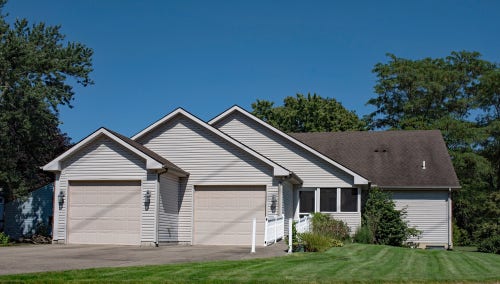
3 Questions to Ask Before Buying Residential Ramps for Wheelchairs
Most homes generally are not constructed to provide mobility for people with disabilities. Even though 1 in 8 adults living in the United States has a functional disability that impacts their mobility, not many are equipped with the accessibility that's needed.
You can confidently make your home accessible to yourself, a loved one, or anyone who requires a wheelchair.
Answering these questions before buying residential ramps for wheelchairs will help you make an informed decision.
Permanent or Semi-Permanent Residential Ramps?
Residential ramps come in two usage styles: permanent and semi-permanent. While both provide the same essential function, their use and material vary.
A permanent ramp is perfect for the resident who needs regular and persistent wheelchair access. These are often constructed out of wood or concrete, allowing their installation to better fit the property overall.
They may also require a contractor and permits, so costs can add up.
Semi-permanent ramps are an excellent choice for temporary use, like a relative moving to a new home. These can also be quickly set up while plans for a permanent ramp are finalized.
These residential wheelchair ramps are often made of aluminum or steel. Aluminum is lightweight and easy to move, whereas steel is heavier and can bear larger loads.
Ramp Dimensions and Specs?
What are the dimensions and specs that your ramp needs to meet? There are three common residential wheelchair ramp types: straight, angled, and switchback.
Straight ramps provide convenient access when they fit the property.
Angled ramps, with a 90-degree elbow, can be more accommodating to homes with a driveway and side-entrances.
Switchbacks, with multiple parallel runs, can create a manageable rise with limited space. Depending on the location, an elevator may be a better option.
You want to be sure when choosing a ramp that the rise (the elevation of the slope over its length) is not burdensome or too steep. The ramp shouldn't be challenging or dangerous to use.
It is important to also consider the size of different wheelchair types when figuring out how to choose a residential ramp too.
The path should be wide enough to navigate completely. Motorized wheelchairs may need a ramp with greater load-bearing capacity.
Weather Conditions?
What kind of weather will the ramp experience? Answering this affects your choice of material and a couple of safety considerations.
Rain can make metal and wood surfaces slippery. Rubberized and anti-slip decking exists to mitigate this hazard. Rain may also cause metals to rust or corrode.
Snow can make wood and metal icy and difficult to clean. Manufacturers do not recommend using standard rock salt on metal surfaces.
All wet weather can degrade wood ramps over time.
Final Thoughts
Think of the other ways you can add mobility in and around your home. For the exterior, consider side and rear entrances too. Build porch and patio access if you need to.
For the interior, look at the mobility between levels and thresholds from room to room. Are there any small hurdles?
Utilities are also a major factor—have you looked at your kitchen and bathrooms?
If this article helped you decide between different residential ramps for your home, keep reading our blog for more!

Related Articles:
- Are there Autonomous Vehicles (AV) for Wheelchair Users?
- Winter Driving Wheelchair Van
- When Should I Consider a Wheelchair Van?
- EV Tax Credit for Wheelchair Vans
- Wheelchair Accessible RV
- What Is a Lightweight Portable Wheelchair?
- How to Choose a Wheelchair Accessible Rental Vehicle
- How Do I Make My Business ADA Compliant?
- Can My Vehicle Be Converted?
- Tips for Renting a Wheelchair Accessible Vehicle
